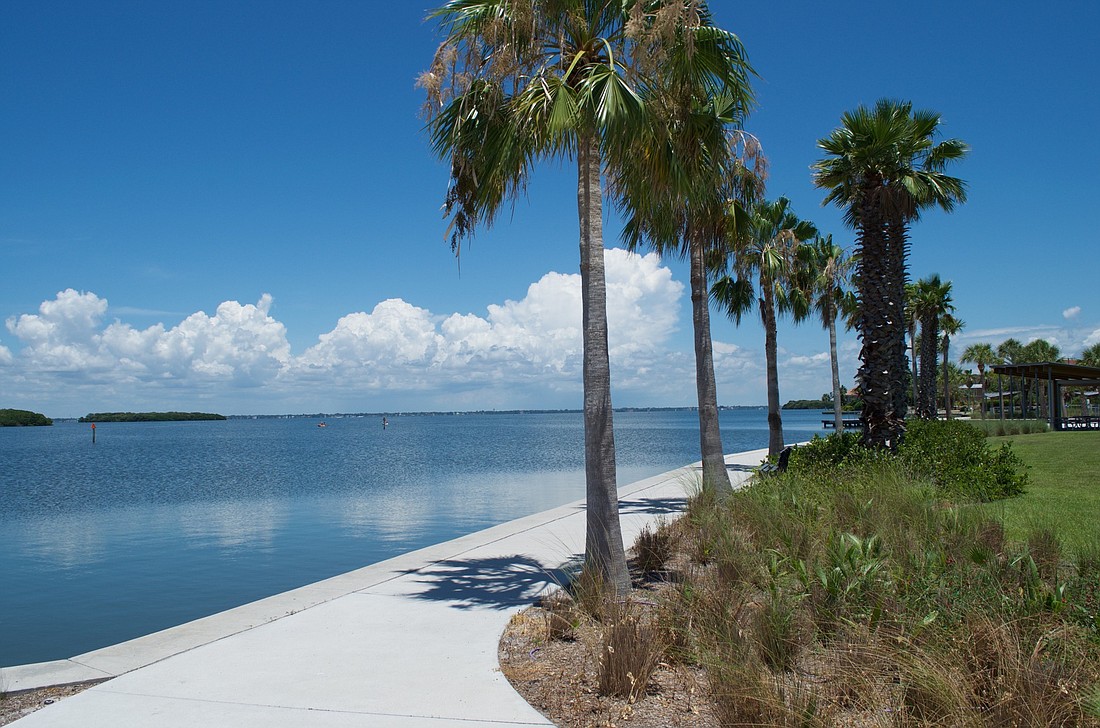- January 13, 2025
-
-
Loading

Loading

Just as land animals can be affected by deforestation, marine animals can be affected by a decline in seagrass growth, and recent data shows area wildlife could be in trouble.
Following a variety of environmental and human-made factors, Sarasota Bay is experiencing a 12-year loss in seagrass growth.
Preliminary results from the Southwest Florida Water Management District show an 18% decline in seagrass across Sarasota Bay, Roberts Bay and Little Sarasota Bay from 2018 to 2020. The decline equates to loss of 2,300 acres of seagrass.
“A healthy bay leads to a healthy bay, so everything is tied together,” Sarasota Bay Watch Secretary John Ryan said. “Having healthy seagrass is really important to our bay ecosystem because about 75% of marine life have some part of their life in seagrass, so this is not great.”
Blackburn Bay showed a slight increase of about 13 acres, but the total acreage of seagrass coverage in the area is down from 12,853 in 2018 to 10,540 in 2020, officials reported. Seagrass levels have not been so low since 2006, when numbers were around 8,854 acres.
Numbers in the 1950s sat at about 10,246 acres and steadily built from there, but now the loss, which scientists say is largely due to red tide and Hurricane Irma, means the area basically has to start over.
“We’re back to where we were 30 years ago,” Sarasota Bay Estuary Program Executive Director David Tomasko said. “The good news is it may be able to stabilize because a lot of things that got us into trouble have been acted upon, and maybe we’ll soon start plateauing and improving.”
Seagrass is major indicator of water quality because it is sensitive to alterations, particularly those stemming from nitrogen increases as a result of fertilizers, wastewater runoff and pet waste. Elevation in nutrients also stimulates algal blooms, which can reduce the light necessary to seagrass growth.
“Seagrass is considered the canary in the coal mine, and it’s often overlooked because it’s underwater, and not many people stick their head under water,” Sheila Scolaro, Sarasota County’s sampling and outreach coordinator, said in a previous interview.
The decline, which amounts to 31% since 2000, is destructive to the bay’s natural habitat. Seagrass provides natural habitat for marine life, stabilizes sediment and captures about 27 million tons of carbon a year.
It also supports about 70% of commercial fish species in Florida and provides food and shelter for marine organisms.
Without it, waterways can become subject to more algal blooms and a lack of marine life, such as the rapid decline in manatee population in the Indian River Lagoon on Florida's east coast. More manatee deaths were reported in the first three months of 2021 than in all of 2020 in Brevard County.
However, local organizations are taking several efforts to help positively impact the health of the bay.
A major step is being made by Sarasota County to overhaul its wastewater treatment plant into an advanced wastewater treatment plant. The $157 million upgrade will reduce the level of harmful nutrients in treated water.
Local efforts, including Sarasota Bay Watch’s clam program and Solutions To Avoid Red Tide’s oyster program, are helping remove harmful nutrients from the water. Since beginning their programs, Bay Watch has placed more than 100,000 clams into the bay, and START has reused about 60 tons of oyster shells.
“But because of the problem with the seagrass and how bad it’s gotten, we all feel we need to do more and go to the source to keep nutrients out of the water in the first place,” said Sandy Gilbert, the chair of START.
To do so, a variety of projects have sprung up throughout Sarasota County, including a program to improve neighborhood stormwater ponds that are responsible for about 65% of the nutrients in the bay.
A microforest was planted on one-third of an acre at Celery Fields to filter stormwater. The $25,000 project is in the process of being replicated at the Venice Area Audubon Society bird rookery and Nathan Benderson Park.
Tomasko said residents should also try to curtail their nutrient footprint.
“We’re not a natural landscape, and so we need to be more careful moving into the future than we have in the last five to 10 years because I think we took our eye off the ball, and that’s how we got to some of our problems,” Tomasko said.